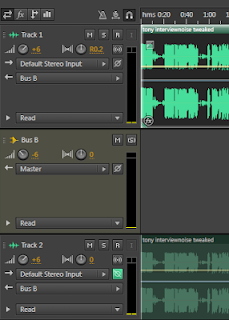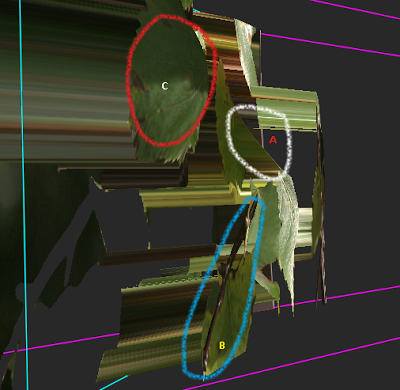Working with Super White Footage in After Effects
After struggling with this for ages, I finally found a fix. If you shoot with any of the more modern cameras which shoot in a YUV colour space, you may well encounter the famous "super white" phenomena. This is when a camera is capable of recording detail above 100IRE or 235 in RGB terms, often creating details as high as 120 as seen on a waveform monitor like this:
This is a sample of an mp4 file straight from an EX1, and although some of the peaks are obviously crushed, detail does exist above 100% Now some NLE's such as Edius handle this very well, however, if you hand off this clip to After Effects for additional processing, AE, as an RGB based application will strip the top off the file, leaving large amounts of data missing from those peak white areas, and leaving you with blocks of detail less whites.
I searched the net and asked many questions on forums about this and drew a blank, kinda giving up on this completely.
This is what AE does to your peaks, the clip is "limited" to 100 IRE and all the detail has been destroyed:
This shot shows that all the writing on the score has been crushed out of existence, creating an ugly white block, rather than a detailed shot.
Today I found an answer - Open your AE project and set it to 32 bit floating point, leaving the working space as "none".
now import your footage, and add an Exposure plug to bring the highlights to within the correct 100% limits, this will preserve the details in the whites on export, with 32 float, AE is able to resolve the full gamut of information, and allow you to adjust the highlights correctly, rather than trashing them.
 |
| Colour Finesse scope showing whites brought down to acceptable level without detail loss. |
A more sophisticated method is to use Colour Finesse 3 which ships with AE, and has good scopes to do a Luma adjustment to bring the levels into line, the YCbCr setting gives very accurate control of luminance levels and gammas.
This is an example of a corrected clip:
This is an example of a corrected clip:
As you can see, all the detail has been retained, and will be preserved on export.
Using Colour Finesse 3 does have a greater impact on resources, and increases render time over the simple Exposure plug.
I hope this helps, it took me forever to find this simple fix for dealing with Super Whites in After Effects.
 |
Liability Insurance through Ashburnham Insurance Services Paul Bates is covered for: Public Liability Insurance: £5,000,000 |























